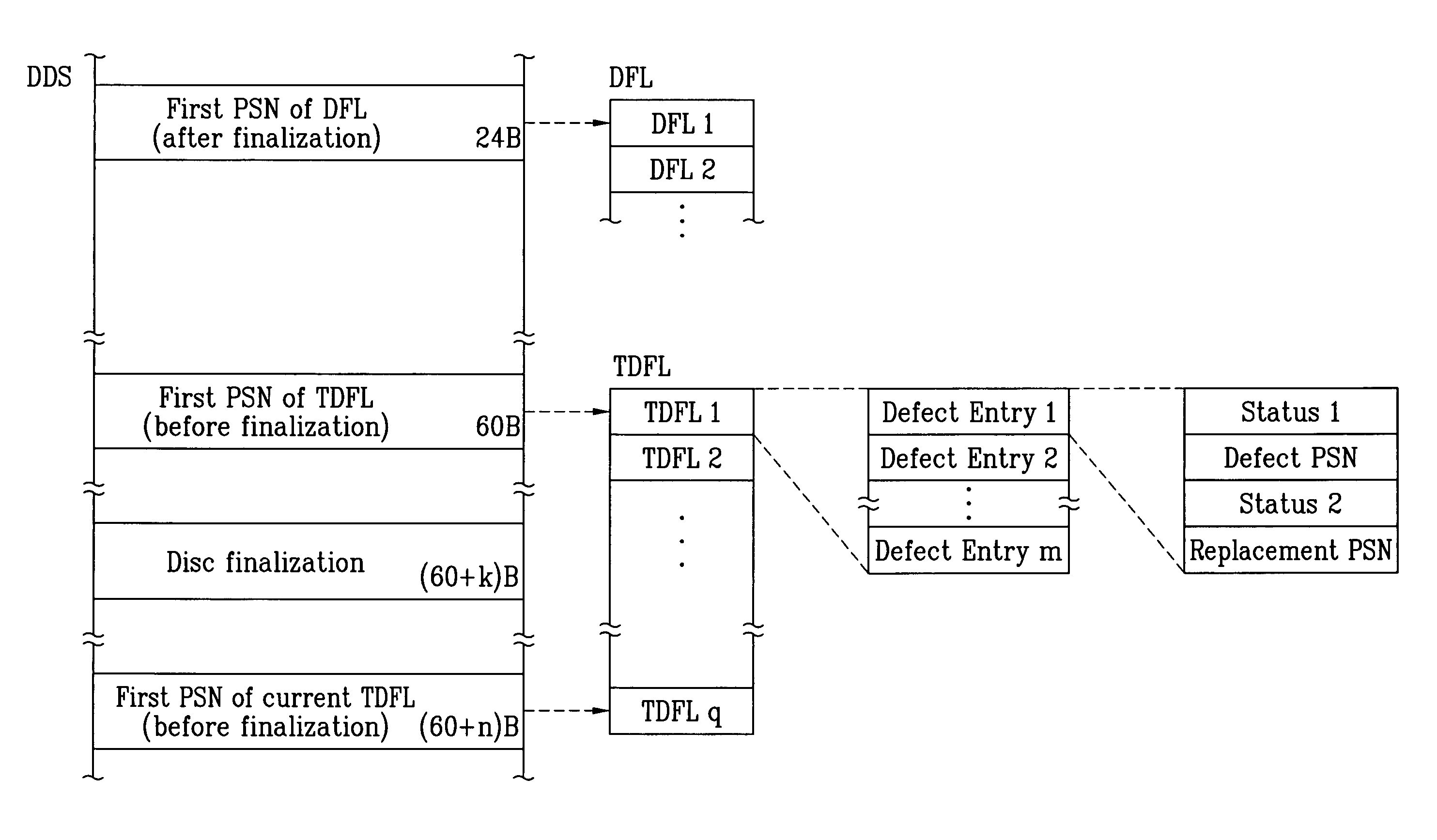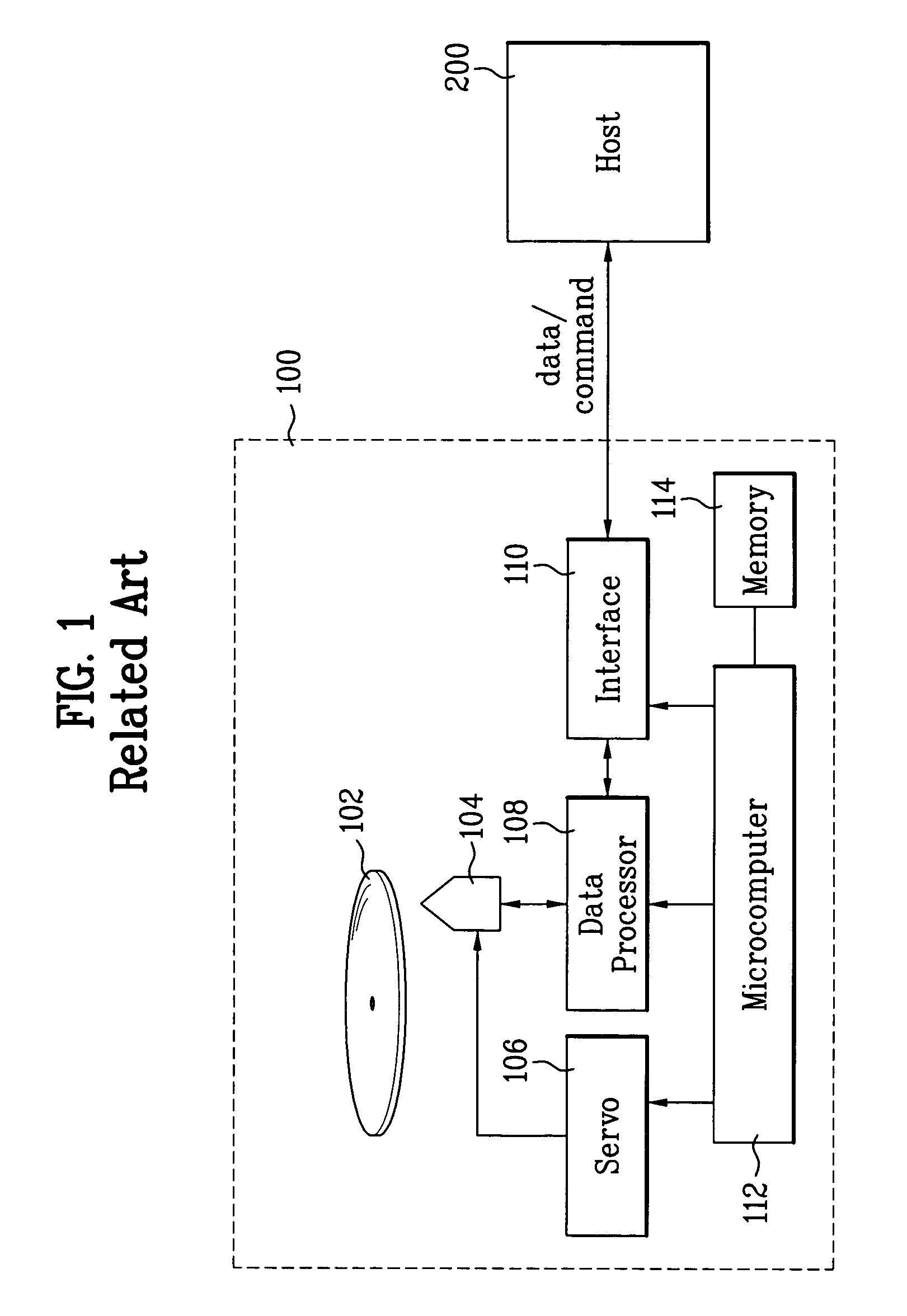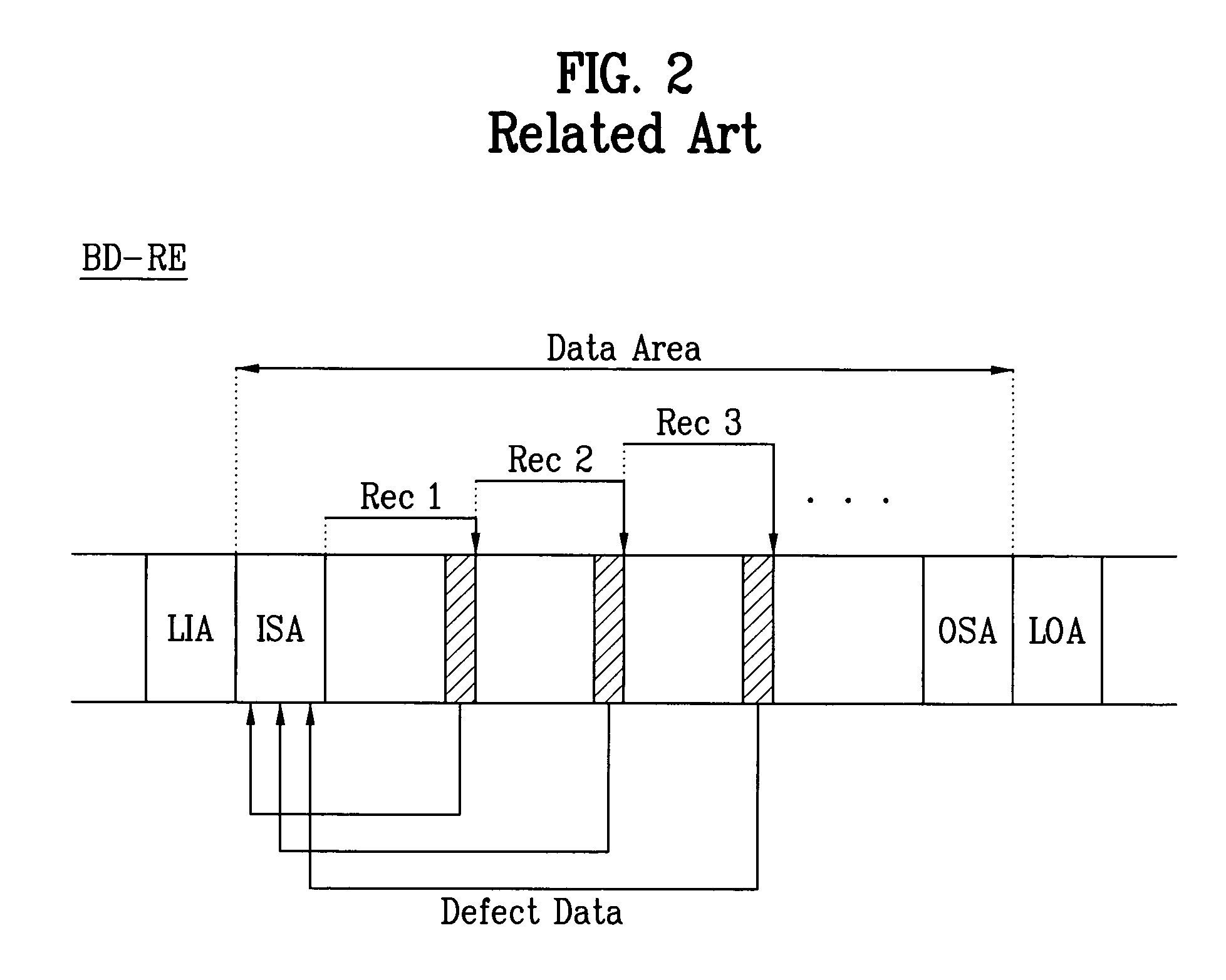Method for managing defective area on write-once optical recording medium, and optical recording medium using the same
a technology which is applied in the field of optical recording medium and defective area management, can solve the problems of limited recording flexibility of discs, surface imperfections and defects generated during their manufacture, and achieve the effect of facilitating bd-wo standardization
- Summary
- Abstract
- Description
- Claims
- Application Information
AI Technical Summary
Benefits of technology
Problems solved by technology
Method used
Image
Examples
Embodiment Construction
[0036]Reference will now be made in detail to the preferred embodiments of the present invention, examples of which are illustrated in the accompanying drawings. Throughout the drawings, like elements are indicated using the same or similar reference designations.
[0037]Referring to FIG. 3, in which assigned areas of an optical recording medium such as a BD-WO type disc are depicted to illustrate the method according to the present invention, a data area is set between a lead-in area (LIA) and a lead-out area (LOA), wherein the data area is essentially comprised of a user data area and a non-user data area disposed on either side of the user data area. The user data area is assigned both physical sector numbers (PSN) and logical sector numbers (LSN), while the non-user data areas are assigned physical sector numbers only. The non-user data areas are respectively comprised of an outer spare area (OSA) and a temporary defect list (TDFL) area. The outer spare area is for writing data co...
PUM
| Property | Measurement | Unit |
|---|---|---|
| area | aaaaa | aaaaa |
| defective area | aaaaa | aaaaa |
| flexibility | aaaaa | aaaaa |
Abstract
Description
Claims
Application Information
 Login to View More
Login to View More - R&D
- Intellectual Property
- Life Sciences
- Materials
- Tech Scout
- Unparalleled Data Quality
- Higher Quality Content
- 60% Fewer Hallucinations
Browse by: Latest US Patents, China's latest patents, Technical Efficacy Thesaurus, Application Domain, Technology Topic, Popular Technical Reports.
© 2025 PatSnap. All rights reserved.Legal|Privacy policy|Modern Slavery Act Transparency Statement|Sitemap|About US| Contact US: help@patsnap.com



